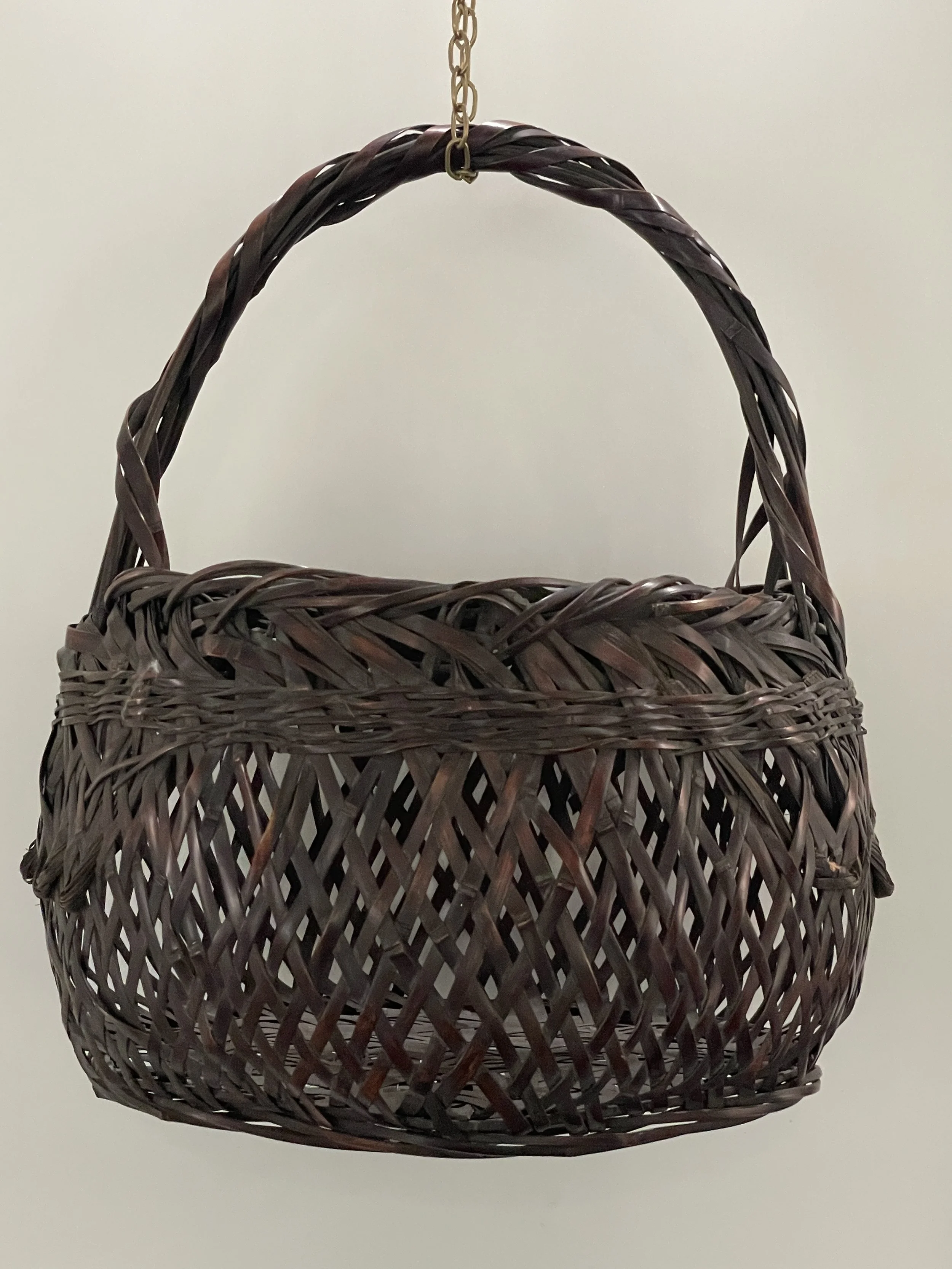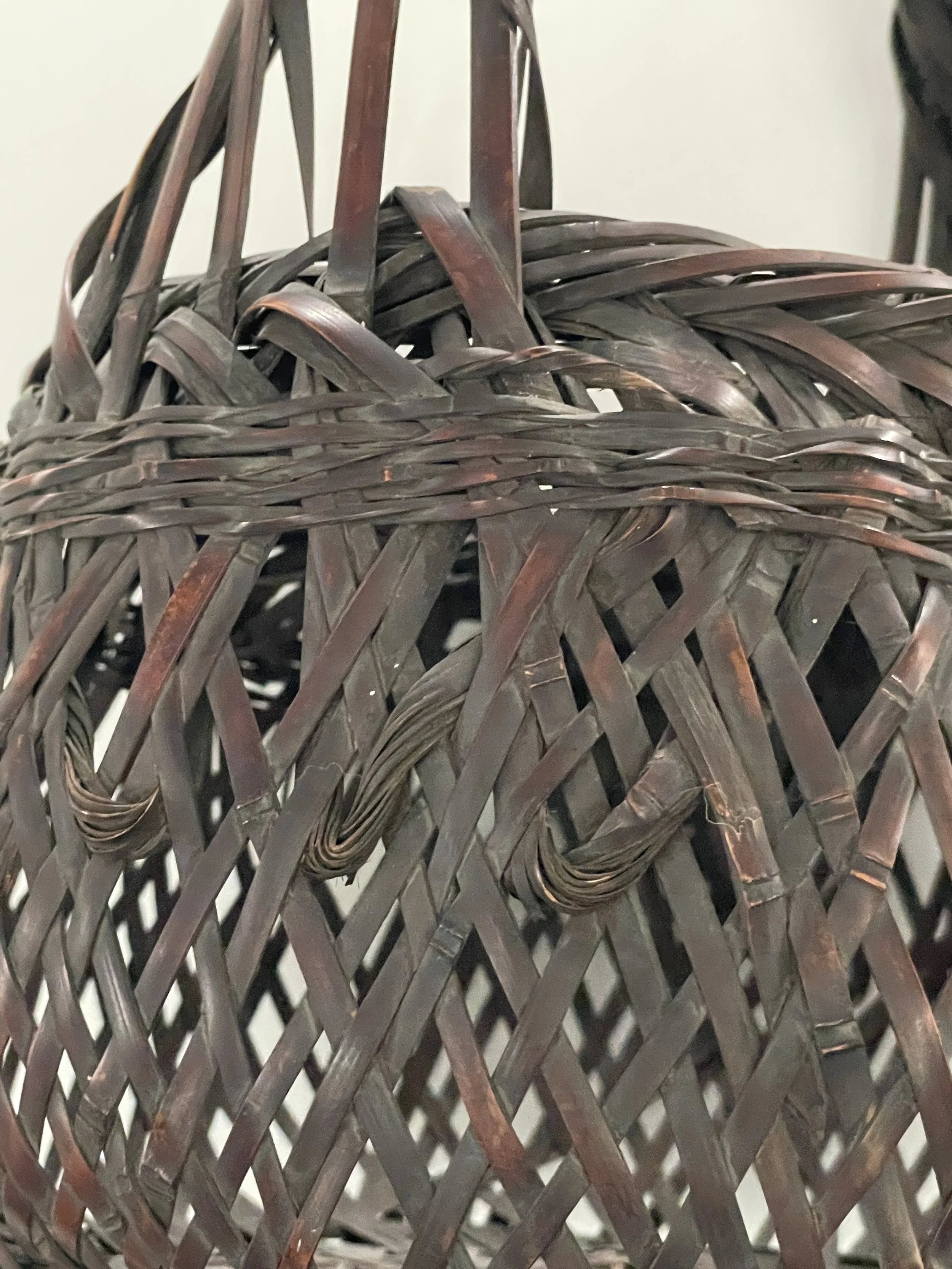Japanese Bamboo Hanakago Basket, Hayakawa Shokosai III 1862-1922
Japanese Bamboo Hanakago Basket, Hayakawa Shokosai III 1862-1922
A woven basket with loop handle signed Sansei Shokosai Tsukuru (made by) Hayakawa Shokosai III, Taisho period.
Date 1915
The Hayakawa family is highly regarded when looking at the finest modern bamboo art in Japan. Hayakawa Shōkosai I (1815-1897) is said to have been the first to sign his works in 1856. His fifth son, Shōkosai III, took over the family business after the death of his elder brother, Shōkosai II, in 1905. Experts agree that he may have played the most important role in "expanding the expressive possibilities of bamboo, departing much further from Chinese models than his father." Reference: Joe Earle: Baskets. Masterpieces of Japanese Bamboo Art 1850-2015.
Bamboo groves are synonymous with the Japanese landscape, and crafting items from bamboo is one of the oldest technical skills in Japan. Skillfully crafted Japanese bamboo baskets have been used in Buddhist and tea ceremonies for centuries, initially evolved from craftsmen copying Chinese baskets brought into Japan in the 15th, 16th, and early 17th centuries. Master-apprentice lineages were established to pass skills down through the ages. During the twentieth century, individual artisans reinterpreted these traditions to create imaginative forms and vessels for flower arrangements. Credit: Tai Modern
Height: 13¼” / 34cm Diameter: 10½” / 27cm
£650
Formerly from an American private collection, to Christies May 2013 and acquired through an agent by John Bly March 2024.






